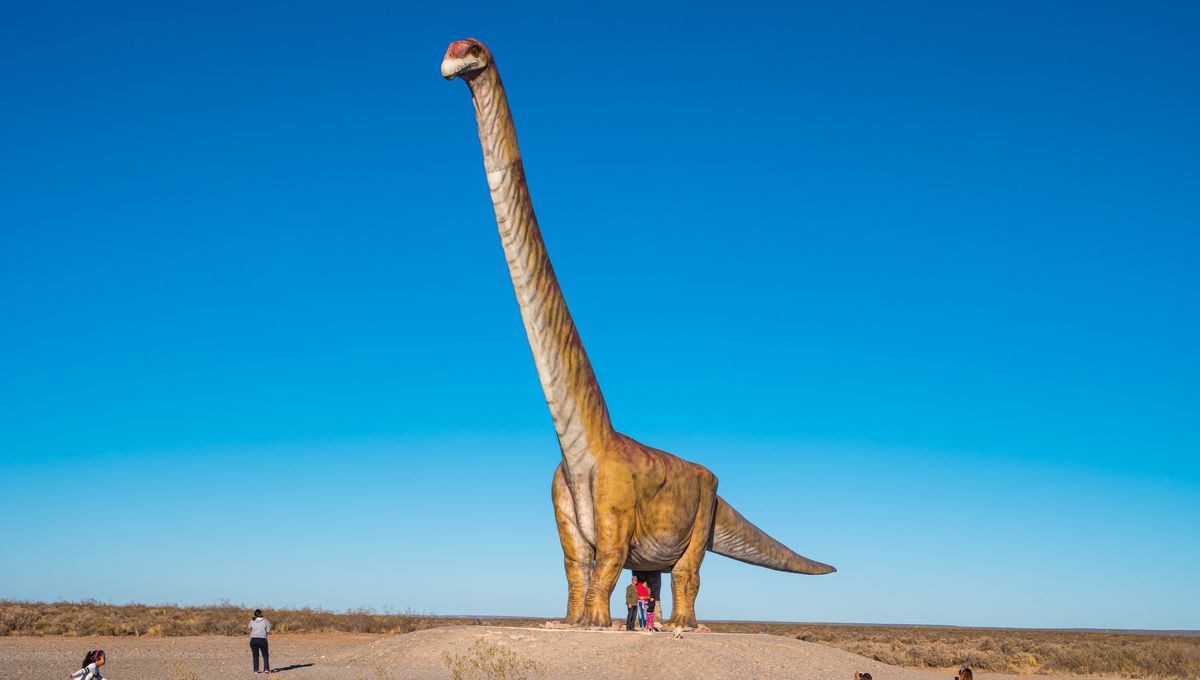
We currently live on Earth alongside the most massive animal that’s ever lived: the blue whale, a colossal marine mammal that can measure up to 33.5 meters (110 feet) and weigh more than 150,000 kilograms (330,000 pounds). However, when it comes to land-dwelling animals, much larger beasts have roamed compared to today’s giants.
The largest terrestrial animal to have ever walked the planet is a record currently held by Patagotitan mayorum, which stretched 37 meters (121 feet) in length. They weighed an estimated 70 tons, or 70,000 kilograms (154,323 pounds) — the equivalent of 10 African elephants, the largest terrestrial species alive today. Although longer than a blue whale, the plodding dinosaur is considerably lighter and nowhere near as massive.
This prehistoric heavyweight was a sauropod, a subgroup of dinosaurs known for their tremendously long necks and equally lengthy tails, as well as their four trunk-like legs that stationed them on the ground like pillars. Other well-known members of this gangly gang include Diplodocus, Brontosaurus, and Patosaurus.
As the name suggests, Patagotitan mayorum lived in the Patagonia region of modern-day southern Argentina. By no coincidence, this land was also the home of Argentinosaurus, which was previously thought to be the largest dinosaur before Patagotitan mayorum was found.
Some contend that Argentinosaurus is larger than Patagotitan and, therefore, should keep its crown as the largest ever terrestrial animal. Truth be told, size estimates are, by their very nature, estimates. Complete specimens have never been discovered and their size is based on incomplete remains, leaving some margin of error.
Six fossils of the humungous species were unearthed in Patagonia and used to first describe the species in 2017, much to the amazement of scientists and the public alike. The sediment around the remains suggests they lived around 100 million years ago in the Cretaceous period.
Based on their shape and stature, it’s reasonable to assume Patagotitan mayorum was a herbivore that used its lanky neck to munch tall trees. Its lumbering weight also suggests the dinosaur was not a ferocious monster, but a gentle giant.
“I don’t think they were scary at all. They were probably massive big slow-moving animals,” Diego Pol, a palaeontologist from the Egidio Feruglio Paleontology Museum in Argentina who described the species, said in 2017 upon its discovery.
“Getting up. Walking around. Trying to run. It’s really challenging for large animals,” he added.
Being this size does have its benefits, though. It’s hard to imagine any predator would be able to take on a fully-grown sauropod. In fact, protection from predators is likely to be one of the main selective pressures that allowed Patagotitan mayorum to reach this size.
Patagotitan mayorum is not the uncontested champion, and there is always the chance a larger species could be unearthed. Excavations of South America are still in their infancy compared to the Northern Hemisphere where dinosaurs have been extensively studied since the 19th century. Considering the number of titanosaurs that have been recovered from rocky Patagonia, it’s a possibility that a larger species might someday be found.
Source Link: What Was The Largest Animal To Ever Walk The Earth?